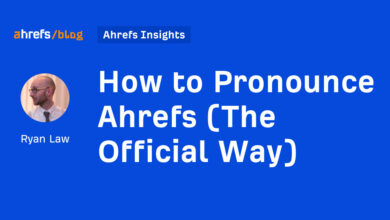Analyzing a Sudden Decline in Website Traffic: A Comprehensive Guide

A sudden drop in organic traffic can be a nightmare for website owners and SEO specialists. It can lead to a decline in rankings, visibility, and conversions, causing panic and confusion. However, instead of panicking, it is essential to take a structured approach to diagnose the issue, take corrective action, and restore the site’s performance. In this article, we will discuss how to analyze a sudden drop in website traffic using a step-by-step process of elimination.
1. Confirm the traffic drop and rule out manual actions:
The first step is to check your analytics software, such as Ahrefs Web Analytics or Google Analytics, for changes in organic performance. Additionally, check Search Console for any manual actions that may have been taken against your website. It is essential to rule out any manual penalties or actions that may have caused the drop in traffic. Remember that discrepancies in data between different tools are common, so look for a consistent drop to verify the issue.
2. Check for any Google algorithm updates:
If you notice a sudden or overnight drop in traffic, it is essential to check for any recent Google algorithm updates. Google usually announces updates on its ranking status page, so align the dates of these updates with your website’s traffic drops. You can use tools like Ahrefs Site Explorer to identify when Google updates occurred and how they may have impacted your site’s performance. It is crucial to wait for a few weeks after an update to assess the damage and make necessary changes.
3. Check for any technical bugs, errors, or changes:
If the traffic drop is not linked to an algorithm update, it may be due to technical issues on your website. Check for any planned or unplanned technical changes that may have caused the drop in traffic. Use tools like Ahrefs Site Audit to run a technical health report and identify any issues that need immediate attention. It is important to compare historical reports and run audits in a staging environment to avoid pushing any technical errors live.
4. Check for any design changes affecting SEO:
Lastly, if there are no obvious technical errors, the drop in traffic may be due to design changes on your website. Use tools like Ahrefs Site Explorer to track content changes and correlate them with traffic spikes or declines. If you recently redesigned your website and changed content, it may impact your site’s SEO performance. It is crucial to assess the impact of design changes on SEO and make necessary adjustments to improve rankings.
In conclusion, analyzing a sudden drop in website traffic requires a systematic approach to identify the root cause and take corrective action. By following the steps outlined in this article, you can effectively diagnose the issue, address any technical or design changes, and restore your site’s performance. Remember to monitor your site’s performance regularly and stay updated on Google algorithm changes to maintain a healthy organic traffic flow. When it comes to monitoring and managing your website’s SEO performance, it’s crucial to stay on top of any changes that could potentially impact your traffic. One common issue that many website owners face is a sudden drop in traffic, which can be quite alarming and often leads to a frantic search for answers. In many cases, the drop in traffic can be attributed to changes that were made on the website itself, rather than being caused by an algorithm update.
One key indicator that the drop in traffic is not due to an algorithm update is the pattern of the drop itself. If the drop is oddly flat before picking up in a big way, it is more likely that the decline is a result of changes made on the website. Algorithm updates typically do not cause such sudden and drastic drops in traffic, so it’s important to consider any recent changes that were made to the site.
In order to pinpoint the exact change that led to the traffic drop, it’s important to conduct a thorough analysis of the website’s content and design. By using tools like Site Explorer, you can identify any major changes that were made around the time of the traffic drop and compare the content before and after those changes. This can help you determine if a recent design overhaul or content update may have been the cause of the decline in traffic.
Additionally, it’s important to check for content-related traffic drops by analyzing the Organic Search tab in Site Explorer. By looking at the Organic Pages graph and the Top Organic Pages section, you can identify any pages that lost traffic and assess factors like content structure, on-page optimization, and link quality. This can help you identify any issues with specific pages that may have contributed to the overall traffic drop.
It’s also important to consider the possibility of competitors stealing your SEO visibility and traffic. By monitoring your competitors in Site Explorer, you can identify any aggressive or up-and-coming competitors who may be taking traffic away from your site. This can help you develop strategies to stay ahead of the competition and protect your SEO visibility.
Overall, by conducting a thorough analysis of your website’s content, design, and competition, you can identify the factors that may have contributed to a traffic drop and develop strategies to improve your SEO performance. By staying proactive and vigilant in monitoring your website’s performance, you can maintain and grow your online presence in the ever-changing digital landscape. A drop in website traffic can be alarming, especially if you rely on organic search traffic for your business. When you notice a decline in your website’s performance, it’s essential to investigate the root cause and take corrective action to prevent further loss. One common reason for a decrease in traffic could be that your competitors are outperforming you in search engine rankings and stealing your traffic. In this article, we will discuss how to identify if your competitors are taking your traffic and what steps you can take to reclaim it.
Identifying Competitor Traffic Theft
One way to determine if your competitors are taking your traffic is to compare your website’s performance with theirs. By using tools like Ahrefs, you can analyze the Top Organic Keywords for both your site and your competitor’s site. If you notice that your losing keywords match your competitor’s winning keywords, it’s a clear indicator that they are stealing your traffic.
To further investigate, you can use the Traffic Investigation Report Template provided by Ahrefs to document your findings. This report will help you identify the reasons behind your competitor’s traffic spike and what they are doing better than you. By understanding their strategies, you can take proactive measures to improve your own SEO performance and prevent further traffic loss.
Taking Action and Monitoring Recovery
Once you have identified the reasons behind your traffic loss and have a clear understanding of your competitor’s tactics, it’s time to take action. Document the suggested tasks and action items in the report and get approval from your boss or client. If you are a team leader, assign tasks to writers, link builders, or technical team members and monitor their progress. If you are not a team leader, schedule a meeting with your manager to discuss the next steps.
After implementing the suggested tasks, monitor the website’s recovery by setting up recurring technical crawls in Site Audit and tracking your target keywords in Rank Tracker. Create a custom portfolio in your Ahrefs Dashboard to monitor the affected pages and track traffic improvements over time using analytics tools like GA4 or Ahrefs Web Analytics.
Final Thoughts
A drop in website traffic shouldn’t be seen as the end, but rather as an opportunity to strengthen your SEO strategy. By identifying the reasons behind the traffic loss, taking corrective action, and monitoring recovery, you can regain lost visibility and protect future performance. Stay proactive, track trends, and continuously optimize your site to stay ahead of the competition.
FAQs:
1. How can I determine if my competitors are stealing my website traffic?
By comparing your website’s performance with your competitor’s using tools like Ahrefs, you can identify if your losing keywords match your competitor’s winning keywords, indicating traffic theft.
2. What steps should I take to reclaim stolen traffic from competitors?
Document your findings in a report, get approval on suggested tasks, assign tasks to team members, monitor progress, and track recovery using tools like Site Audit and Rank Tracker.
3. How can I stay ahead of the competition in SEO?
Stay proactive, track trends, continuously optimize your site, and monitor performance using analytics tools to ensure you are ahead of the competition.
4. What should I do if I notice a sudden drop in website traffic?
Investigate the root cause of the traffic drop, take corrective action, and monitor recovery to regain lost visibility and protect future performance.
5. How can I improve my website’s SEO performance?
By identifying competitor tactics, implementing suggested tasks, and monitoring progress, you can improve your SEO performance and prevent further traffic loss. the benefits of mindfulness meditation for mental health
Mindfulness meditation has gained popularity in recent years as a powerful tool for promoting mental well-being. This ancient practice, rooted in Buddhist traditions, involves focusing one’s attention on the present moment without judgment. By cultivating a sense of awareness and acceptance, mindfulness meditation can help individuals reduce stress, improve concentration, and enhance overall mental health.
One of the key benefits of mindfulness meditation is its ability to reduce stress and anxiety. In today’s fast-paced world, many individuals are constantly bombarded with demands and distractions, leading to feelings of overwhelm and anxiety. By practicing mindfulness meditation, individuals can learn to quiet the mind and focus on the present moment, rather than worrying about the past or future. This can help to reduce the body’s stress response and promote a sense of calm and relaxation.
In addition to reducing stress, mindfulness meditation can also improve concentration and focus. In a world filled with distractions, many individuals struggle to stay present and focused on the task at hand. By practicing mindfulness meditation, individuals can train their minds to stay focused on the present moment, rather than getting caught up in distractions. This can help improve productivity and performance in various areas of life, such as work, school, or relationships.
Furthermore, mindfulness meditation has been shown to have a positive impact on mental health conditions such as depression and anxiety. Research has found that mindfulness meditation can help individuals develop greater self-awareness and self-compassion, which are key factors in improving mental health. By learning to accept and observe their thoughts and feelings without judgment, individuals can develop a greater sense of emotional resilience and well-being.
Moreover, mindfulness meditation can also help individuals cultivate a greater sense of gratitude and appreciation for the present moment. By focusing on the here and now, individuals can learn to savor the simple pleasures in life and develop a greater sense of gratitude for the things they have. This can help individuals shift their focus from what they lack to what they have, leading to greater overall happiness and life satisfaction.
In conclusion, mindfulness meditation offers a wide range of benefits for mental health. By reducing stress, improving concentration, and enhancing emotional well-being, mindfulness meditation can help individuals cultivate a greater sense of peace and contentment in their lives. Whether practiced as a daily ritual or integrated into therapy sessions, mindfulness meditation can be a valuable tool for promoting mental well-being and overall quality of life.




